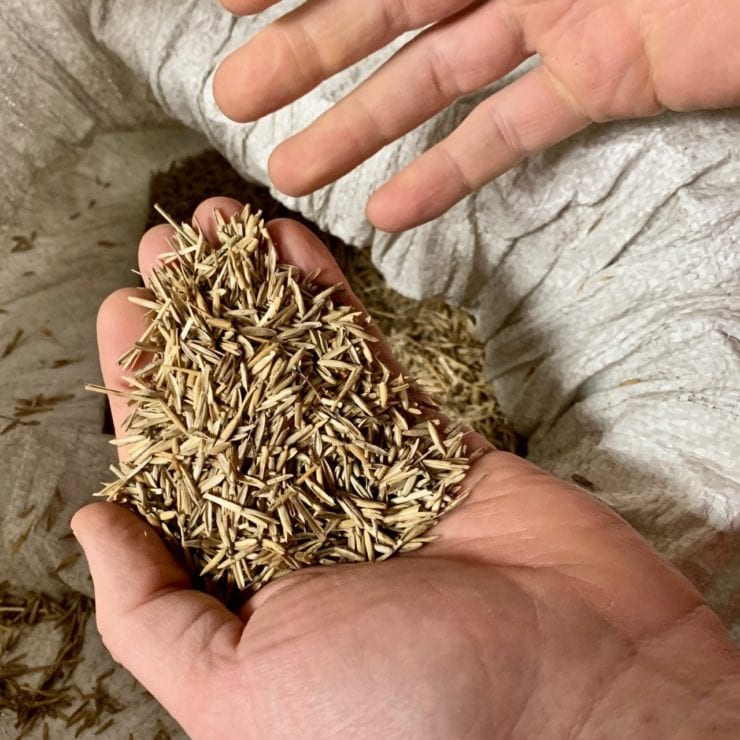
Coolship prospects hot at Little Fish Brewing
March 21, 2019
Starting a brewing program to make traditional Belgian lambic-inspired sour beers is actually a very complex process for a brewery to undertake. Those hurdles have not slowed Sean White of Little Fish Brewing. Sean, the brewery’s co-founder and head brewer, is well on the way toward his goal of making Méthode Traditionnelle beer in Athens, Ohio.
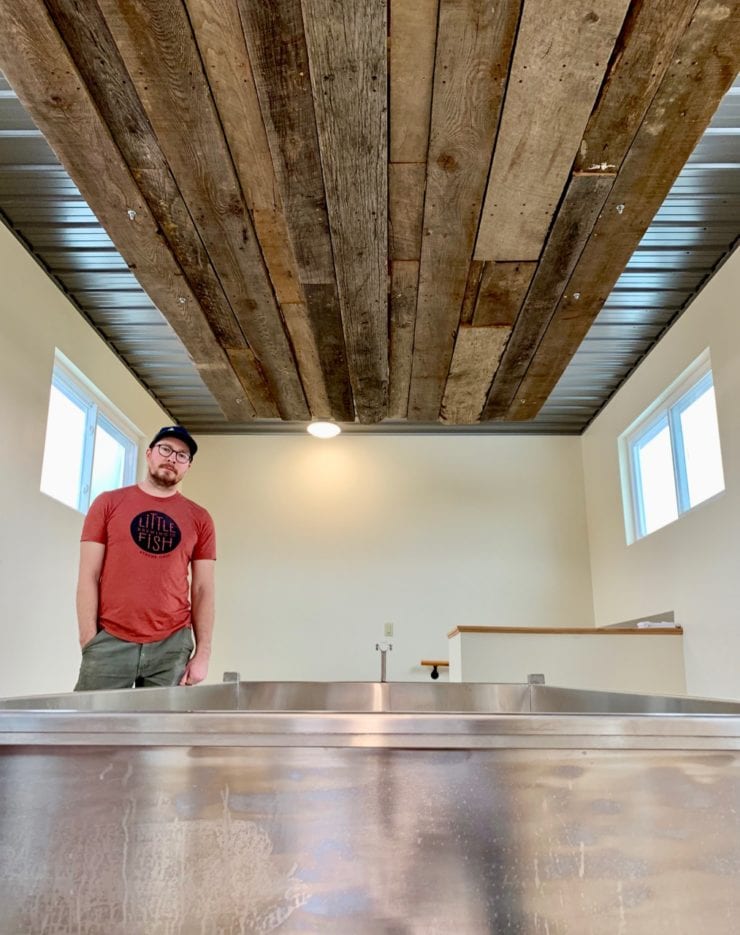
Méthode Traditionnelle, or MT for short, pertains to beers produced outside of Belgium that adhere to the method of making traditional Lambic. (Follow this link to see all the standards that must be followed in order to call your beer Méthode Traditionnelle.)
The most visible thing in a brewery making MT beers is the coolship. Little Fish installed its coolship late last year.
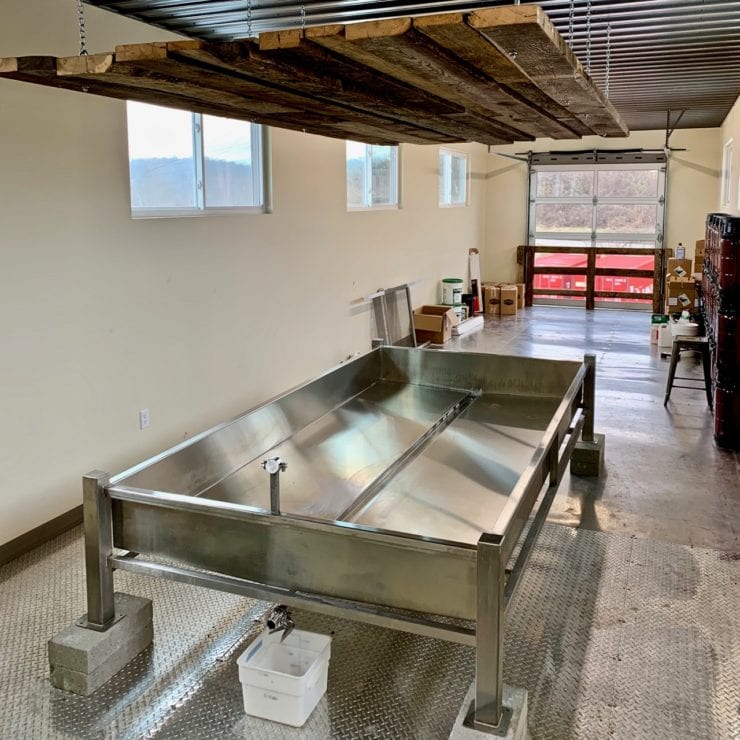
A coolship is a large, shallow rectangular tank used for cooling, inoculating, and fermenting wort. (Wort is the sweet liquid that yeast turns into beer.) At most all American breweries today, wort is cooled by piping it through in-line chillers, inoculation is done by pitching brewers yeast into the wort, and all primary fermentation is done inside closed stainless steel tanks. Using a coolship in the MT manner is a radical departure for brewers schooled in modern brewing techniques.
In making Methode Traditionnelle beer, the brewer is not allowed to inoculate the wort by adding brewers yeast as you would in a regular beer. The inoculation has to happen naturally from the microbes just floating in the air of the room. That is why the method is often called wild or spontaneous fermentation.
In the past, Sean had tasted other brewers’ spontaneously-fermented beers and found that some of the ones brewed at the beginning of their coolship programs were lacking in “funk complexity.” He suspicioned it might be due to their coolship rooms not yet supporting a large enough colony of wild yeasts. He knew he wanted to pre-inoculate his coolship room somehow to help give his initial MT fermentations a boost.
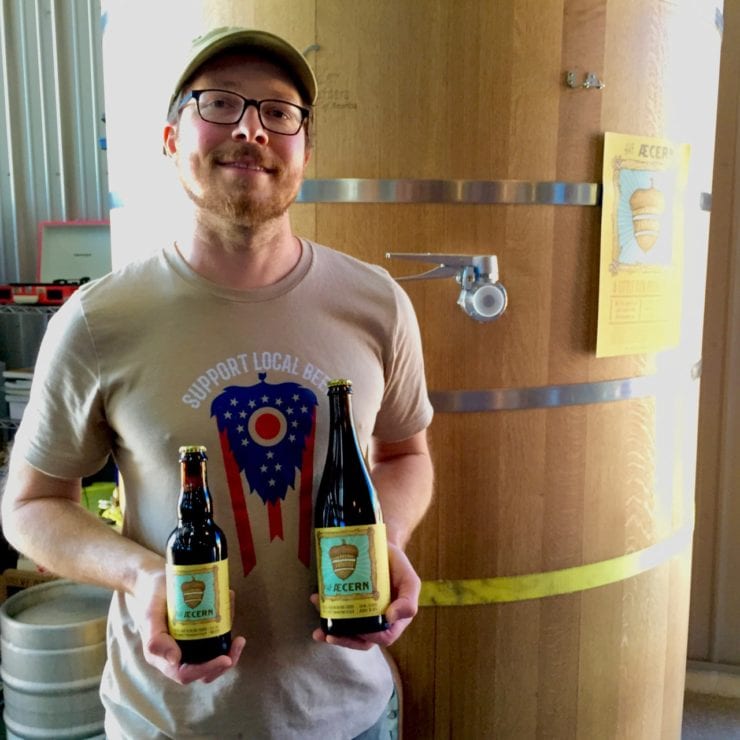
Over the past two years through his foeder program, Sean has developed a house mixed culture of yeasts that he is quite happy with and uses to inoculate several of his standard brews. So he was thinking about how he could get his house culture established in the coolship room itself. He came up with a plan that would kill two birds with one stone.
“Once we decided we were actually getting a coolship,” he said, “I needed to find some other applications for the coolship besides just brewing MT beers in it. Because that’s only going to be three brews a year.”
His solution was to take his flagship Saison du Poisson and modify its production process to add a fermentation in the open coolship. He would pump the saison wort into the coolship, let the wort cool, pitch his house foeder culture yeasts in it along with his regular saison yeast strain, and let it go. This way, he could assure that some of his preferred blend of yeasts would escape from the bubbling, fermenting wort and take hold on the surfaces of the new coolship room. To enhance this intended outcome, he added wooden planks hung over the coolship. These boards from a 100+ year old barn were provided by a neighbor just down the road. Then boards would harbor the yeasts that escaped from the house foeder-culture fermentations in the coolship below, as well as hold whatever critters were already present on them.
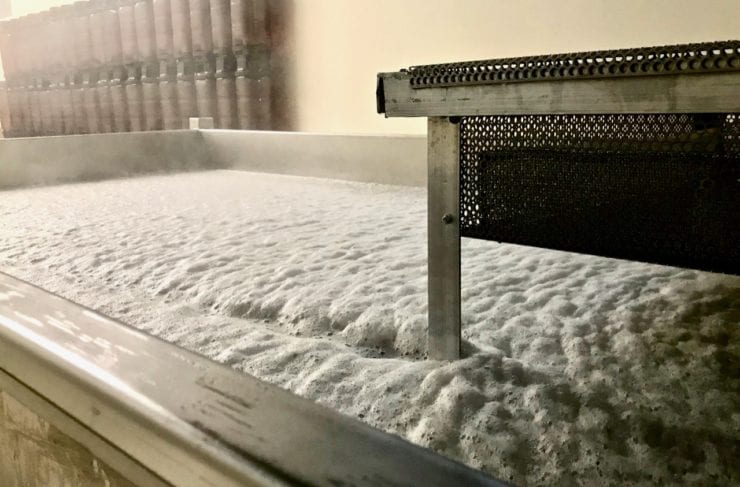
You could hear the excitement in Sean’s voice as he described witnessing a coolship fermentation.
“As brewers we don’t actually get to see our fermentations that much because they are taking place in closed vessels with no windows on them. But when you have that open fermentation, it’s like getting super, super excited as a home brewer again. I mean it’s crazy. Just moussey. It looks like the top of a lemon meringue pie.”
Saison du Poisson reborn in coolship
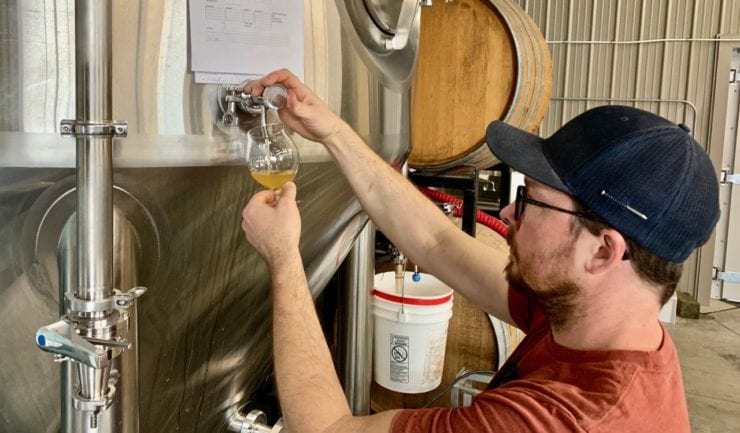
This open coolship fermentation of Saison du Poisson meant it also picked up some wild yeasts and bacteria from the Athens air, which added different components to its taste. Tasting this beer still quite young following fermentation, one quickly notices that the beer picked up some nice brett lambic-like flavor that is not present in the regular tank-fermented saison. “Some cherry pie and almost a little sweaty-cheesy,” as Sean described it. This complexity definitely adds depth to the flavor and truly gives the saison a bit of Athens, Ohio terroir.
Little Fish initially made several batches of the saison, totaling 30 barrels and fermented each of them in the coolship. It takes about 12 days for the open fermentations to die down. Then the saison is moved to a stainless steel tank where it sits for a while to let the batches marry. From this tank, 10 barrels of finished saison will be removed at a time, and, in a solara-like system, 10-barrel batches of freshly-made saison will replace it to refill the tank. The 10-barrel batches removed will be packaged and then bottle-conditioned or keg-conditioned for two to three months before being offered for sale. This process will produce an interesting new flavor profile and balance for Saison du Poisson that Sean describes as “funk all the time.”
“We want to get it to get it to the point where it’s a really special beer,” he said. “It’s brewed with all Ohio ingredients. It’s funky. It’s naturally conditioned. But we can still sell it at a really decent, fair price. It’s reborn.”
Méthode Traditionnelle begins
After running several batches of house foeder-culture inoculated beers through the coolship room, it was time to make the first MT beer. The coolship room is up on the second floor and hard piped to the brewery downstairs. On the evening of February 7, at the end of the boil, a batch of steaming hot (180˚-190˚ F) wort was pumped up to fill the coolship. Around the room are large windows and a garage door, which were all opened up allowing the outside air to blow through the coolship room and across the barn boards suspended over the coolship. This allowed both the ambient Athens wild and house organisms to naturally blow around the room and settle on the wort. As the wort slowly cooled overnight it is naturally inoculated with all the critters that land in it. By morning a vigorous fermentation had begun.
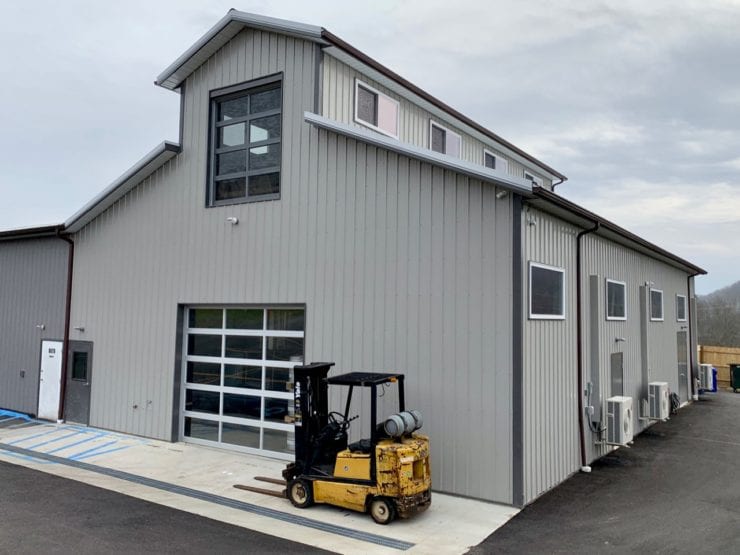
Next, the fermenting wort is transferred into used wooden barrels to finish fermentation and for aging. These 500-liter puncheon barrels have been steam cleaned to help ensure that the fermentation that takes place in them is caused by the critters that fell into the coolship and not from stuff left in the barrel from a previous use. The beer will ferment and age entirely in the barrels, which will be stored in the coolship room.
Three times a year, more MT beer will be made and barrels of it added to the room. Some of the beer will aged for up to three years before being mixed together with one and two year old MT beers to make a final blend. The blend can then be bottled straight or different blends may be put into another tank to sit on fruits for a while. The beers will be bottled and then bottle conditioned to produce a natural carbonation.
“If I’m going to brew these beers, I want to brew them to Methode Traditionnelle standards,” says Sean. “I want to be able to claim that.”
Sean’s goal is also to make his MT beers with all-Ohio ingredients. His first batch was all-Ohio except for using hops from a non-Ohio source, but he will change that to Ohio-grown hops as soon as it is practical.
And watch for greatly increased activity in the collaboration department. With the new coolship as a draw, Little Fish is doing lots of collaboration beers with other folks, recently including Jackie O’s, Branch & Bone (Dayton), and Haus Malt. Sean says, “It’s really an exciting thing to get to share with other brewers, because not a lot of people actually have them.”
Try the taste of the coolship soon

Because an MT beer of the kind Sean is making must ferment and age for a long time in the barrel, it will be a good while before customers get to taste the results. In the meantime, you can taste a bit of the flavors the coolship can add by drinking Little Fish Brewing’s newly revised Saison du Poisson. The first batches of it should be available around mid-June. Mark your calendars and watch for it.
Once the reborn version of Saison du Poisson is released, the brewery plans to keep it available all year round.
Little Fish brews Saison du Poisson with 25% Ohio Spelt and 75% Ohio barley, malted by Haus Malts. The Ohio-grown hop varieties change due to availability, but currently include, Crystal, Cascade, Nugget, Chinook, and an unidentified mystery hop. The beer is then keg- or bottle-conditioned for two to three months to add carbonation and allow the flavors to mature. ABV is 5.9%.
Kitchen and gardens expand
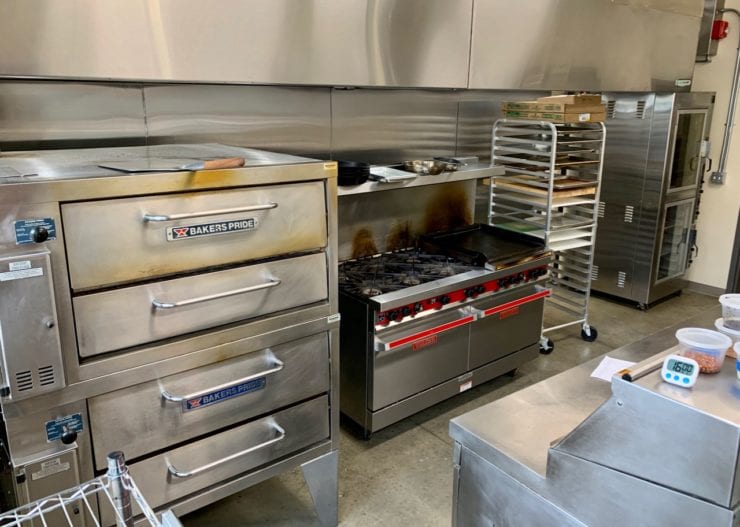
In the past, Little Fish offered food provided by a food trailer on the grounds. Those days are gone. This winter the brewery opened an impressive new kitchen space inside their expanded building. The new LFB kitchen has the ability to offer some fancier options, but is starting with mostly more familiar fare. As with its brewing ingredients, Little Fish tries to source its food as much as possible from the local Ohio region.
The foundation of the menu is deep dish pizza and tacos — some dressed more traditionally and some with more creative ingredients. Expect to usually find several interesting, healthful variants on these classic favorites.
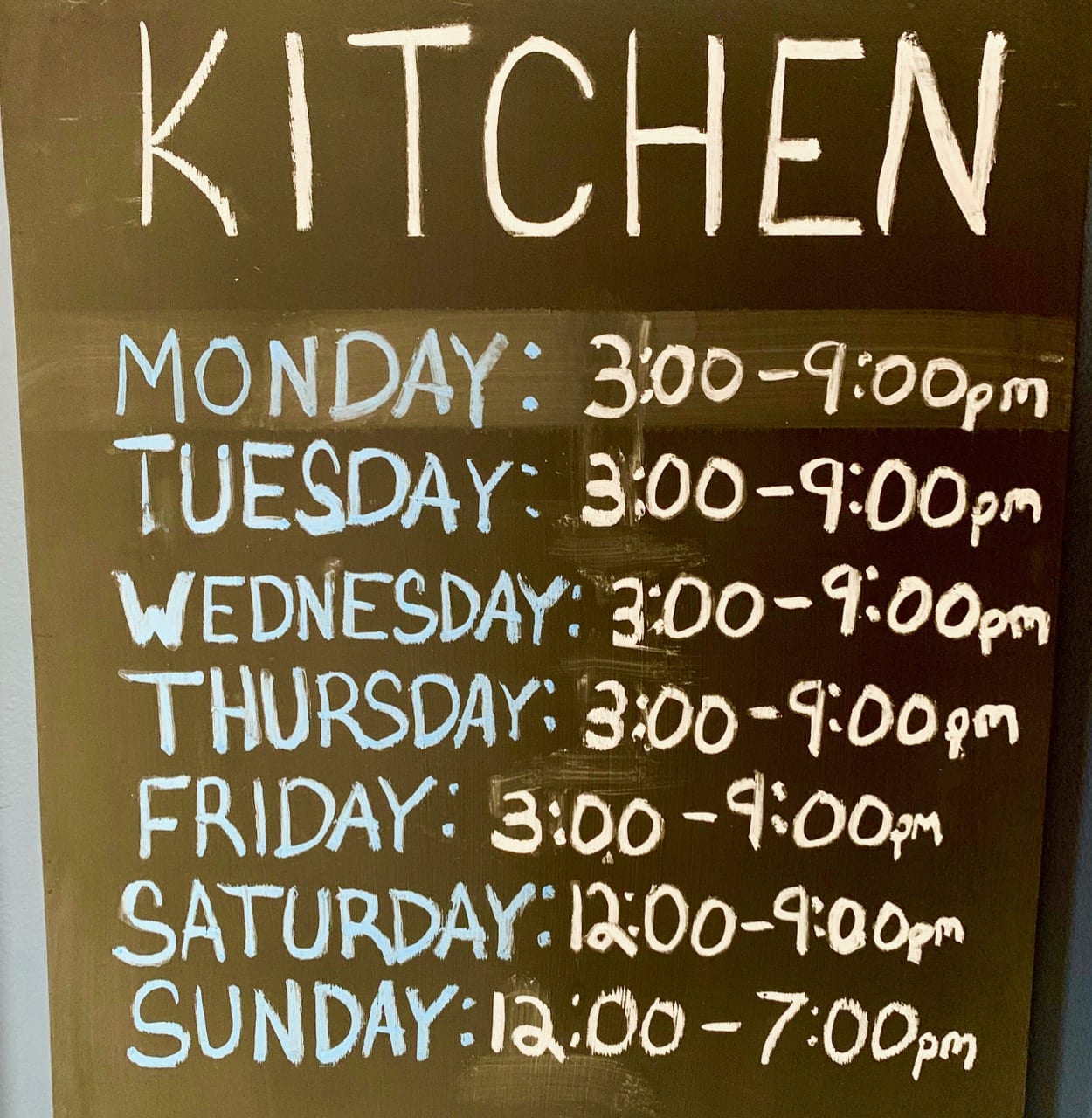
Little Fish got local chef-entrepreneur Becky Clark to help them start up the kitchen and serve as interim chef. She is also working with them on menu design and with developing a long-term kitchen operations plan. Clark is best known as the owner of Pork and Pickles, which is a pickling, sausage, charcuterie, and catering operation that also has the delicious kitchen trailer at Devil’s Kettle Brewing.
Before getting into pro-brewing, Sean White actually went to culinary school and worked in the food industry for a number of years (hence so many culinary beers). You will see some of his input in the LFB food menu.
To fully showcase the kitchen’s abilities, Little Fish plans to host fancier themed beer dinners that take place in the coolship room. A hard-top cover is placed on the coolship to turn it into a dining table. Guests are seated around the coolship and served a multi-course, gourmet-style dinner, carefully paired with Little Fish beers. Sure sounds like fun to sup among all the aging barrels of Méthode Traditionnelle beer.

With the major brewery expansion and kitchen construction projects now complete, the focus turns to improving the brewery grounds and gardens. To accomodate Sean’s passion for brewing with things grown or foraged locally, Little Fish will begin enlarging and upgrading its gardening operation this year. Among the things already growing adjacent to the brewery are fruit trees, berry bushes, and hops. Last year their pluot crop (a cross between a plum and an apricot) ended up in a beer. Expect a lot more of that in the future. This summer, some garden produce could end up on their food menu too.
Other Little Tidbits
- Little Fish Brewing is up to 19 employees total. At least 6 of those are full-time. That is an impressive accomplishment for this still very young small brewery that has grown organically, step by step.
- Among American brewers, Little Fish co-founder Sean White says he definitely looks up to the Austin, Texas brewery Jester King. While observing that Jester King Brewery is well ahead of Little Fish in the development of its MT beers, Sean says they are doing everything he wants to do. He says if you want to see his vision for the next couple of years, “Check out Jester King. That’s where we want to be.”
- Little Fish made a beer from a historical 1872 amber ale recipe that was originally brewed on an Ohio Mennonite farm. Interestingly, the recipe includes the spices coriander, orange peel, black licorice, and star anise. Fermented in the coolship and barrel aged, LFB’s version will be a funky, spicy farmhouse-style beer. Look for it sometime in late summer or fall.
- Little Fish is experimenting with and testing the brewing use of Kernza, a perennial intermediate wheatgrass grain the brewery obtained from the Ohio State University College of Food, Agricultural, and Environmental Sciences. Plant scientists are seeking to develop a more sustainable, environmentally friendly grain that requires less soil disturbance in cultivation and more efficiently utilizes soil nutrients.
